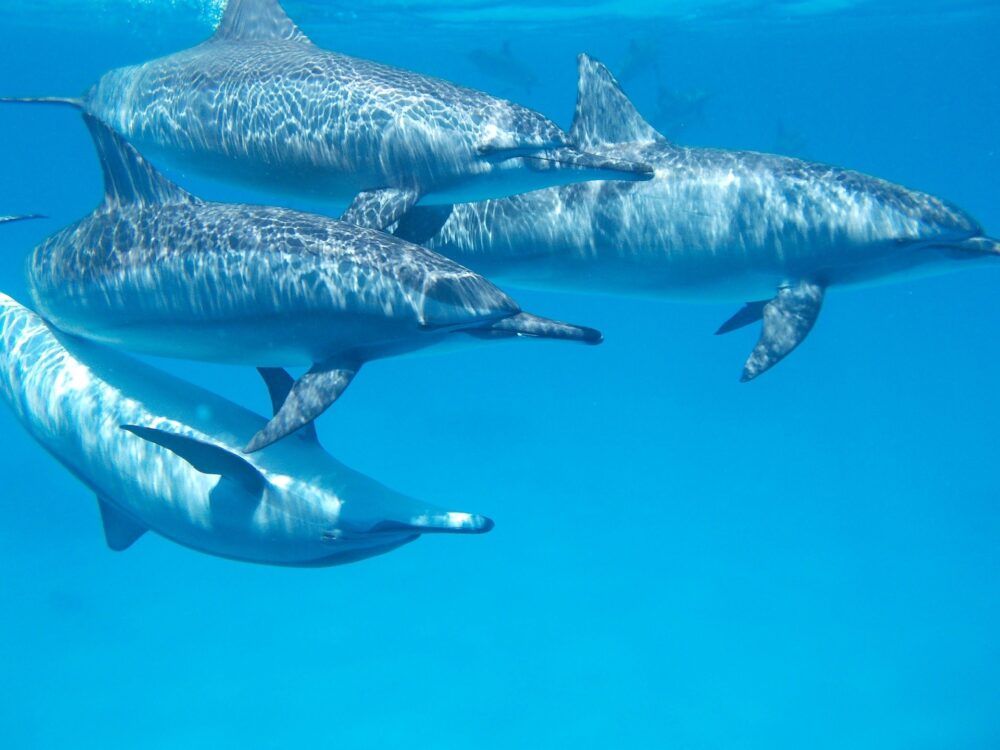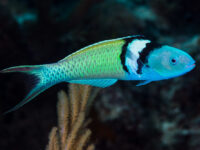Dolphins are generally regarded as one of the most intelligent species of mammals, even demonstrating the ability to learn and follow verbal cues and gestures from human trainers while in captivity. In the wild, dolphins use sound signals to navigate, hunt, and communicate with other creatures, including individuals of their own species and of other dolphin species. Dolphin sounds can be broken down into three distinct categories: clicks, burst pulsed sounds, and whistles — a specific type of call with distinct communication purposes. In fact, each dolphin has a signature whistle, which they use to identify themselves and address others, and this call has complex uses in social contexts. Therefore, there are concerns about the effects of human-produced noise on these whistles and resulting behavioral changes in dolphins.
One of the most significant calls produced by dolphins is the signature whistle. Through the analysis of 50 years of signature whistle research, researchers from the University of St Andrews and the Woods Hole Oceanographic Institute defined the call as “a learned, individually distinctive whistle type in a dolphin’s repertoire that broadcasts the identity of its owner.” These calls develop as early as the first three months of life, and are influenced by experience. Dolphins base their signature whistle on sounds they hear, such as their mother’s whistle or whistles from their own population. Unlike vocal learning in other species that copy a model, dolphins use their experience to create a signature whistle that avoids closely matching signals they have previously heard. Once the signal has crystallized, or been defined by an individual, there are very few factors that can change the call. The sound becomes a permanent identifier for the dolphin.
Dolphins use their experience to create a signature whistle that avoids closely matching signals they have previously heard… the sound becomes a permanent identifier for the dolphin.
Signature whistles are used for several purposes in dolphin communication. Typically produced only when animals are out of visual range, these calls identify the producer to nearby animals. Dolphins are also skilled in vocal copying and use this ability to address other animals. For example, dolphins will copy a signature whistle of another individual and call out using this signal in an attempt to address that individual. Dolphins also repeat whistles to confirm that they received an original signal. In other contexts, whistles can convey stress levels based on rates of sound production. They can also convey the recognition of other animals that they passed by at sea or the reunion of a mother and her calf.
Whistles, and especially signature whistles, have a crucial role in dolphin communication and social abilities. For this reason, researchers have begun to look into the impact of human activity on these signaling mechanisms. The presence of boats is known to have an influence on dolphin behavior, including vertical and horizontal patterns of avoidance from boats that increase dive duration. These altered behaviors can affect hunting and social interactions for dolphins. Researchers at the Blue World Institute of Marine Research and Conservation examined the frequencies produced by recreational boats and found that they fell within the same range as dolphin signals, particularly whistles.
To avoid the masking of their calls, dolphins have altered their signals in noisy oceanic environments dominated by recreational boat noise.
To avoid the masking of their calls, dolphins have altered their signals in noisy oceanic environments dominated by recreational boat noise. These signal variations include changes in whistle frequency modulation, increased emission rates and durations of calls, and changes in call structure. Another reason that dolphins may be changing their calls is the disruption of a behavior. When a recreational boat — or another source that alters sea ambient noise — appears, dolphins may change their task and type of communication. For example, dolphins engage in intense communication with group members to increase hunting success. Noisy conditions would require higher energy requirements to produce unmasked sounds and could cause increased stress in response to decreased food intake.
The alterations to dolphin communication caused by human-produced noise is very concerning, especially considering the importance of whistles in their communication, from hunting signals to greetings and recognition. The increased sea ambient noise in coastal areas is frequently related to human recreational activities, and dolphins tend to avoid areas with this increased noise. Therefore, it is crucial to understand the frequencies of noise pollution that recreational boats produce and encourage education about the effects of recreational activities on marine animal behavior. Many people enjoy learning about these species at aquariums and other animal experience parks, and this fascination can be applied to help preserve the natural behaviors of these captivating oceanic species.
Journal of Comparative Physiology A (2013). DOI: 10.1007/s00359-013-0817-7
Marine Pollution Bulletin (2016). DOI: 10.1016/j.marpolbul.2016.02.030
Acta astronautica (2014). DOI: 10.1016/j.actaastro.2014.07.003






